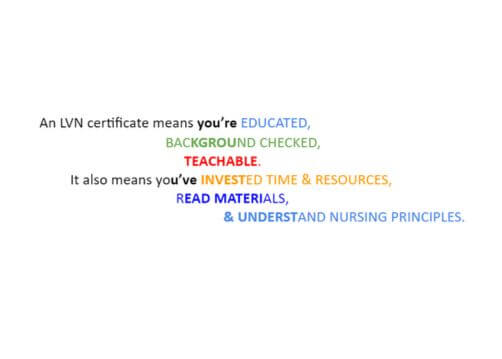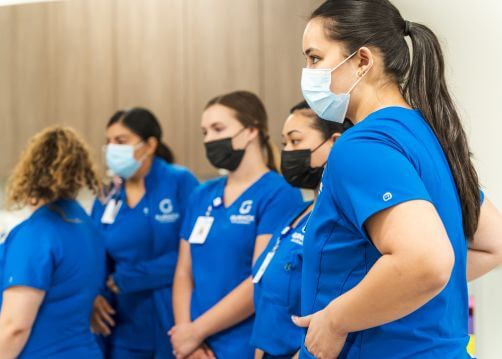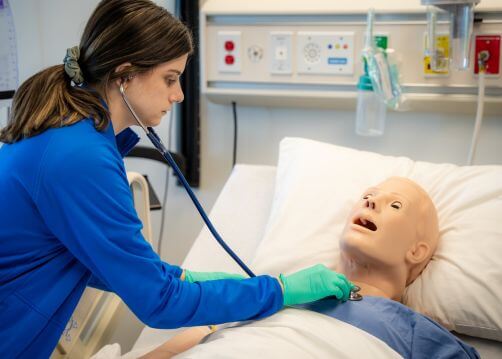Becoming a Licensed Vocational Nurse
Date: July 13, 2022
An entry-level Vocational Nurse diploma program may be needed if you’re searching for a meaningful nursing career without undergoing years of schooling. Depending on your goals, the diploma program can serve as a viable starting place for a helpful and satisfying vocation or a launching pad for additional degrees, such as the Associate Degree in Nursing (ADN/ASN) or a Bachelor of Science in Nursing (BSN).
Gurnick Academy of Medical Arts Training
Community and private colleges offer LVN training. Gurnick Academy of Medical Arts provides two Vocational Nurse programs with programmatic approval by the Board of Vocational Nursing and Psychiatric Technicians (BVNPT) and institutional accreditation by the Accrediting Bureau of Health Education Schools (ABHES). These include the following:
- A diploma-based Vocational Nursing program, taking 13 months or 52* approved instructional weeks to complete.
- An A.S. in Vocational Nursing program takes eight (8) months or 82✣ approved instructional weeks to complete. (This includes technical courses before enrolling in the 30 weeks of general education courses.)
Generally, training for a diploma program is divided into the following areas:
- Classroom Instruction
- Labs
- Clinical Practice.
Classroom Instruction
The first area, classroom didactics, focuses on nursing basics, including patient care, anatomy and physiology, medication administration, pharmacology, and clinical nutrition. An overview is also provided in medical/surgical and obstetric, pediatric, and psychiatric nursing. The curriculum seeks to provide students with the technical, clinical, and interpersonal skills necessary to succeed in today’s challenging and changing nursing field. Additionally, the course offers preparation for the National Council Licensure Examination for Practical Nurses (NCLEX-PN). Earning a Vocational Nursing diploma makes one eligible to sit for the NCLEX-LPN licensing and, upon passing, qualify as a Licensed Vocational Nurse. In California, Licensed Vocational Nurses (LVNs) are licensed by the Board of Vocational Nursing and Psychiatric Technicians.1
Labs
The second area, nursing labs, allows students to practice their classroom knowledge and newfound skills in realistic settings on high-fidelity mannequins, classmates, and sometimes even actors. Students can implement their new knowledge and build understanding before their first job by providing a safe yet practical venue to apply what one has learned. Patients are saved from their trials and errors, and new students are released at higher levels of practice.
Clinicals
The third area, clinical rotations, provides invaluable, hands-on experiences for students. While in our academy, Vocational Nursing students perform clinical rotations at one of our affiliate medical facilities. These include skilled nursing facilities and obstetric and pediatric locations. Here, students may acquire practical experience within specific clinicals. There are many partnerships to choose from; however, one generally works within their clinical(s) of interest and educational pursuit. Clinical rotations are essential as they provide needed networking for students, access to members, and real-life work histories. This professional networking and access to mentors can prove invaluable and non-tangible work-ready skills.
Now Might Be the Time
According to the Bureau of Labor Statistics, there is a current shortage of qualified Licensed Vocational Nurses in the country, with reports estimating employment of Licensed Practical and Licensed Vocational Nurses projected to grow nine percent from 2020 to 2030, about as fast as the average for all occupations.2 Further, nearly 60,700 job openings are projected for each year, on average, over the next decade.2 Many of these expected openings are due to the need to replace workers transferring into other occupations or entirely exiting the labor force, such as through retirement.2
Salaries
US News and World Report cite that Licensed Vocational Nurses made a median salary of $48,820 in 2020. The best-paid 25 percent of Licensed Vocational Nurses earned $57,860 yearly, while the lowest-paid 25 percent made $42,060.3. In California, these professionals have a mean annual salary of $64,090.3 Altruistically, licensed vocational nurses to speak to a sense of calling and a commitment to patient care and healthcare excellence.
More Information
In summary, with all that there is to consider for an entry-level career in nursing, shouldn’t you look into enrolling in a quality Vocational Nursing program today? Learn about our school, vocational Nursing programs, the curriculum, pass rates, learning environments, and student life today. Click here for more information.~
*52 Approved Instructional Weeks
✣82 Approved Instructional Weeks includes Technical Courses taken before enrolling in the 30 Weeks of General Education courses at Gurnick Academy of Medical Arts.






